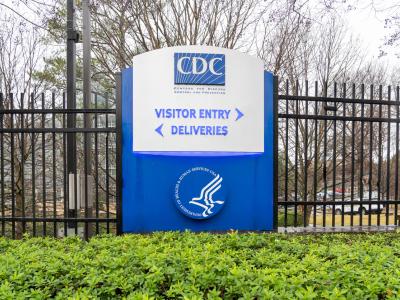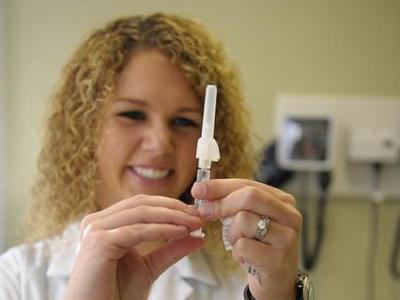Antibiotics given to moms during labor might affect babies' microbiomes
Antibiotics administered to mothers during labor to prevent group B Streptococcus infections appear to alter the gut microbiome of newborns, according to a small study yesterday in Scientific Reports.
The effects appeared to resolve within 12 weeks.
Researchers from McMaster University in Hamilton, Ont., compared "bacterial community succession," or the growth of gut bacteria in 53 infants with no antibiotic exposure with 14 infants whose mothers received the preventive antibiotics during delivery. The team tested the development of the infants' gut microbiome at 3 days, 10 days, 6 weeks, and 12 weeks from birth.
"Our research indicates there is a delay in the expansion of the dominant infant gut colonizer, called Bifidobacterium, when infants are exposed to antibiotics," said Jennifer Stearns, PhD, the study's lead author, in a McMaster news release. The bacterial differences between the two groups all but disappeared by 12 weeks.
"It's a good sign that bacterial groups recover by 12 weeks but it's still unclear what these findings mean for infant health, especially since early infancy is such an important developmental time," Stearns said.
About a fourth to a third of pregnant women test positive for group B Streptococcus during routine screening, and most receive antibiotics during labor to prevent transmitting the bacterium to their infants at birth, according to the release.
Nov 28 Sci Rep study
Nov 28 McMaster University press release
Duke publishes guide for gathering key ASP data
Duke University has published a metrics guide on developing patient outcome measures and measurement tools for antibiotic stewardship programs (ASPs), the Duke Antimicrobial Stewardship Outreach Network (DASON) said in a Nov 27 news release.
The guide, produced through a partnership with the US Centers for Disease Control and Prevention Foundation and Merck, aims to address a need for strong stewardship metrics "that reflect the impact of ASPs on patient safety and optimized care," DASON said. Despite the importance of data to drive decision making, most facilities have limited access to local data and thus limited ability to assess the impact of ASPs, the center said.
DASON convened a panel of experts to assess metrics used or proposed in the medical literature, as well as unpublished data. The panel then identified the best metrics to (1) improve antimicrobial prescribing practices, (2) improve patient care, and (3) aid in targeting ASP efforts, as well as those that can be feasibly monitored in any hospital that has an electronic health record. Scientists then tested the candidate metrics at five pilot sites.
"Working closely with these pilot partner sites, the feasibility of data capture and analysis as well as the utility of each candidate metric to guide local stewardship activities was assessed during on-site visits, frequent communication with the stewardship teams, and formal survey techniques," DASON said. "This Guide reflects the outcome from this development and feasibility project."
The guide includes a technical manual, a report tool, data table guidelines, sample feedback reports, and other resources.
Nov 27 DASON news release
Nov 27 DASON ASP metrics guide
Study shows EMS-administered antibiotics don't help with sepsis
Having emergency medical services (EMS) personnel administer antibiotics to suspected sepsis patients in the ambulance en route to the hospital did not improve survival, regardless of illness severity, Dutch researchers reported yesterday in The Lancet Respiratory Medicine.
After training EMS personnel to recognize sepsis, the investigators conducted a randomized controlled open-label trial involving 10 large regional ambulance services serving 34 secondary and tertiary care hospitals in the Netherlands. They compared the effects of early administration of the antibiotic ceftriaxone in the ambulance with usual care (the control group).
The study involved 2,672 patients, 1,535 in the intervention group and 1,137 in the control group. Patients in the intervention group received antibiotics a median of 26 minutes before arriving at the hospital emergency department.
At day 28, 120 patients (8%) had died in the intervention group and 93 (8%) in the control group. In addition, 102 patients (7%) in the intervention group and 119 (10%) in the control group were readmitted to a hospital within 28 days, but the difference was not statistically significant. The researchers reported seven mild allergic reactions that could not be attributed to ceftriaxone.
The authors conclude, "In patients with varying severity of sepsis, EMS personnel training improved early recognition and care in the whole acute care chain. However, giving antibiotics in the ambulance did not lead to improved survival, regardless of illness severity."
An accompanying commentary suggests that researchers should perform a randomized controlled trial involving only the most severe cases, and antibiotics with a narrower mechanism of action be used.
Nov 28 Lancet Respir Med study
Nov 28 Lancet Respir Med commentary













